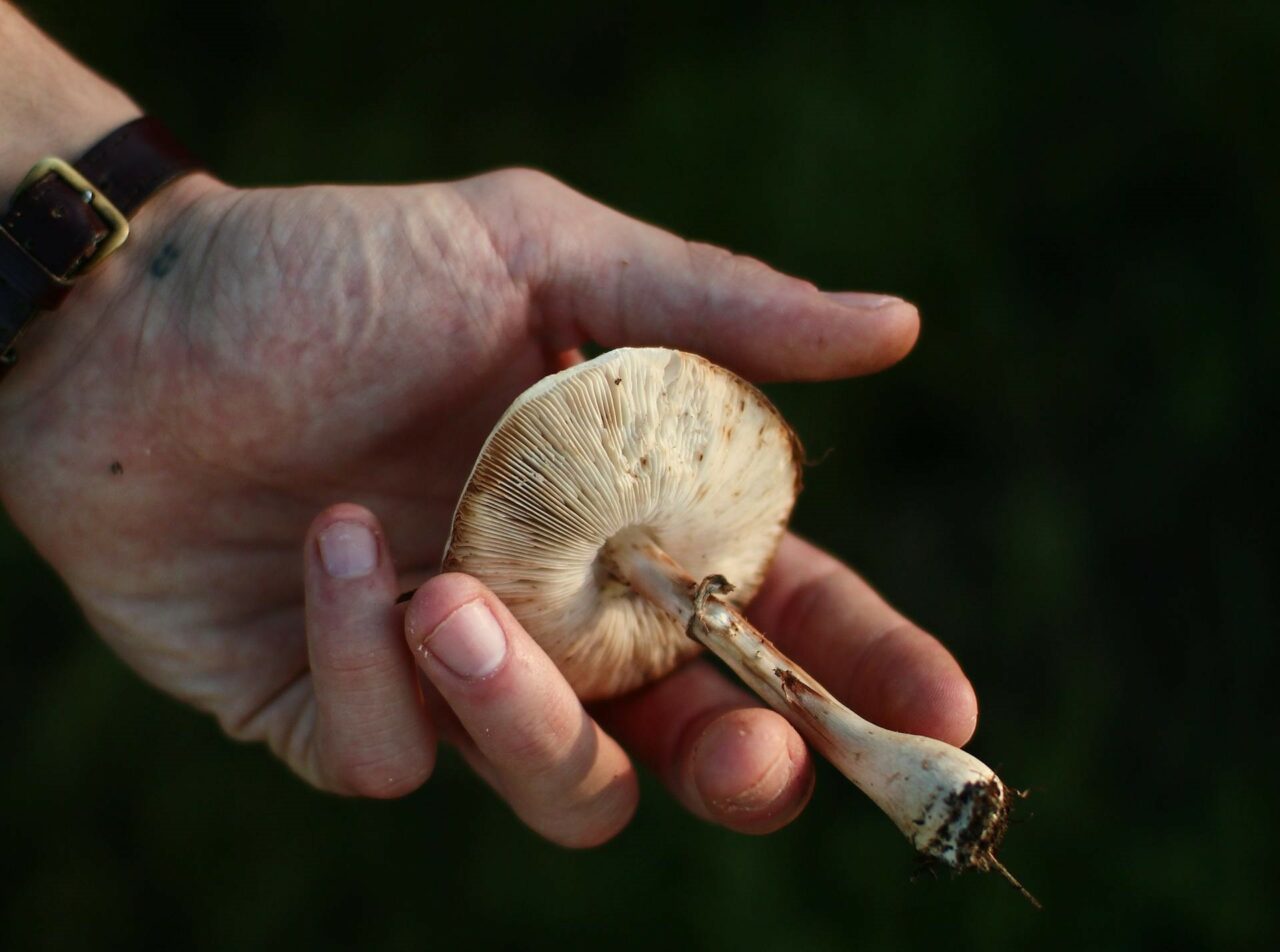Psilocybin mushrooms, similar to LSD in their function as a serotonin 5-HT2A receptor agonist, are a classic psychedelic. Current research is exploring their potential in psilocybin-assisted therapy for mental health challenges, such as the emotional distress linked with major depression, anxiety, cluster headaches, and migraines.
Understanding how shrooms benefit these conditions requires studying their metabolism within the body. This knowledge enables scientists and users to grasp how the active compound triggers psychological and therapeutic effects. This article offers a basic overview of the pharmacology and pharmacokinetics of psilocybin.
[toc]
Key Takeaways:
- Half of the psychedelic fungi ingested is absorbed and distributed within the body.
- The compound in the fungi is dephosphorylated by the enzyme alkaline phosphatase, primarily in the liver.
- Around 3.4% of the compound is excreted in its original form within 24 hours, with most of it being discharged as a stable metabolite.
What is Pharmacokinetics?
Pharmacokinetics (PK) is the study of how the body processes substances such as drugs once they are introduced into the system. It is different from but related to pharmacodynamics, which studies how a compound interacts with the body. PK investigates four main areas: absorption, distribution, metabolism, and excretion (ADME).
Understanding these processes equips healthcare professionals to prescribe the most effective medications with the least risk. It also allows them to customize treatments to each patient’s unique physiological make-up and lifestyle.
How Does Pharmacokinetics Relate to Psilocybin?
Psilocybin and psilocin, the primary active compounds in certain magic mushroom species, have piqued significant interest among researchers and users. Pharmacokinetics explores how the body processes mushrooms containing psilocybin, aiding in understanding their potential medicinal or recreational impacts.
These compounds go by several names such as “magic,” “psychedelic,” “medicinal,” or “sacred.” The fungi with these compounds are ingested, with The types of mushrooms, their source, dimensions, the environment in which they grow and are dried, and their age can all lead to substantial differences in their potency levels.
While these mushrooms naturally grow in the wild, researchers have devised ways to create them in a laboratory setting. Both the naturally occurring and lab-grown versions exhibit low toxicity levels, though minor side effects such as nausea or vomiting may be experienced.
In spite of these physical side effects, the chemical compounds present in these mushrooms have demonstrated potential therapeutic properties due to their safety profile and non-addictive characteristics. These benefits have stimulated research into their application in psychotherapy, specifically targeting anxiety and depression.
Pharmacokinetics in Four Stages
Psilocybin, the compound present in these mushrooms, is inactive in its natural state and functions as a prodrug, converting into its active form, psilocin. Enzymes such as alkaline phosphatase facilitate this conversion, enabling psilocin to be absorbed and distributed throughout the body, reaching various tissues. However, following oral administration, psilocybin cannot be found in the circulatory system, feces, or urine.
Absorption
Absorption is the process by which the compound enters the bloodstream from its point of administration. It determines the rate and effectiveness of the compound reaching its intended destination, such as the plasma. The most common route of administration is oral, although inhalation has been attempted, but it is not as efficient as oral ingestion.
The absorption process also encompasses the release of the compound from the dosage form during oral intake. Elements like a delay in the throat or esophagus can affect this, possibly decelerating the effects or causing discomfort. Once the compound reaches the stomach, the acidic conditions might start to decompose it before it enters the bloodstream.
Animal studies suggest that only around 50% of orally ingested psychedelics are absorbed and dispersed throughout the body.
Factors Affecting the Absorption Process
Several aspects can influence the absorption process, leading to variations in the onset, intensity, and duration:
- Stomach Contents: A full stomach can slow the process as it delays the onset of effects. An empty stomach promotes quicker absorption.
- Body Fat: Substances can accumulate in fatty tissues, potentially prolonging their impact.
- Age: Body composition and metabolic rates can vary with age.
- Zero-Order Kinetics: This method involves eliminating the substance at a steady rate, regardless of its concentration.
- First-Order Kinetics: With this method, the elimination rate is proportional to the concentration of the drug.
The term ‘Distribution’ describes the process by which psilocin, once in the bloodstream, is dispersed throughout the body. Psilocin’s lipophilic nature allows it to cross the blood-brain barrier and impact the central nervous system.
system.Several factors, including the substance’s size, polarity, and protein-binding capabilities, as well as the individual’s physiological features—like hydration status and body composition—significantly influence this process.
The goal is to achieve an effective concentration in the target area. For the substance to work, it needs to reach the intended site, as defined by the volume of distribution, while remaining unattached to proteins. This allows it to actively engage with its receptor.
What Factors Affect the Distribution Process?
Several factors can influence the distribution process:
Typically, the effects begin to manifest within 20-40 minutes of ingestion, peak around 80-100 minutes, and usually last between 4-6 hours when consuming magic mushrooms.
How is Distribution to the Brain Achieved?
Early experimental research on two species found that its binding affinity follows the sequence: 5HT2A > 5HT1A > 5HT2B [23]. It also binds to dopamine D1, 5HT1E, 5HT5A, 5HT7, 5HT6, D3, 5HT2C, and 5HT1B receptors.
It acts as a partial agonist at the 5HT2A receptor, with an efficacy of around 40%. The psychedelic effects are likely due to its partial agonist activity at 5HT1A autoreceptors.
The mood-enhancing and psychotomimetic experiences could be linked to the correlation between increased dopamine levels and sensations of depersonalization and euphoria. Hallucinogens work by modifying the neurochemistry and receptor activity. They amplify 5HT2A agonist activity by enhancing BDNF synthesis in the hippocampus, which promotes neurogenesis and reduces fear-related behaviours.
Excretion
Excretion refers to the process where the
The human body expels compounds via several routes, including the kidneys, lungs, skin, and digestive tract. In the context of the kidneys, they filter a naturally occurring psychedelic drug either in the glomerulus or are secreted in the tubules. This process is further complicated by some reabsorption.
The primary compound has a half-life of roughly 160 minutes, while psilocin has a half-life of about 50 minutes. Animal studies indicate that the majority of this is excreted through the urine, with approximately 65% being expelled within 8 hours of ingestion. Even after this period, smaller amounts of the substance can be identified in bile and feces.
In humans, around 3.4% of the substance is eliminated in its original form within 24 hours, while most is removed as psilocin-O-glucuronide, a more stable metabolite. The stability of this compound allows for its detection in urine samples over a prolonged timeframe.
There are two main methods of substance elimination:
Most psychedelic drugs are expelled following the first-order kinetics method, achieving stable concentrations after four to five half-lives. The complete removal also occurs after four to five half-lives.
Discover Our Variety of Hallucinogenic Mushrooms
The metabolic process varies among different mushroom species. By buying from reliable online vendors like Shroom Gummies Canada, you can prevent inadvertent consumption of poisonous fungi. Some species, like Agaric mushrooms, can induce intense and undesirable effects. For this reason, it’s essential to source your magic mushrooms from trustworthy dispensaries, as opposed to risky street vendors or unpredictable wild foraging.
| Feature | Enigma | Full Moon Party | Gold Member | |
| Strain Type | Psilocybe Cubensis OMNI | Psilocybe cubensis (Thai Koh Samui) | Psilocybe cubensis | |
| Potency | Exceptionally high; 3.8% tryptamine content | Moderate to high potency | High potency | |
| Visual Characteristics | Resembles a blob or | Resembles the structure of a cauliflower or brain | Exhibits typical cubensis traits; of average size | Thick white stems; caps with a golden caramel hue; apparent blue bruising |
| Effects | Reputed to be the most powerful; induces intense effects | Powerful cerebral high; delayed onset with notable visuals | Intense visuals and feelings of euphoria |
Explore Psilocybin Mushroom Usage Online
Grasping the pharmacokinetics of shrooms is crucial for medical professionals, researchers, and users. Armed with this knowledge, you can make well-informed decisions about dosage and timing, thus reducing potential hazards.
Discover your perfect psychedelic experience at Shroom Gummies Canada. Whether you’re after a soothing journey or a deeper exploration, our wide array of products is designed to satisfy your unique requirements. Enjoy top-quality, safe, and regulated shrooms, bypassing worries about unreliable sources or poisonous mushrooms.
Experience the best magic mushrooms Canada provides and take your psychedelic journey to unparalleled heights.
Frequently Asked Questions
Do shrooms interact with any other medications?
Our products could potentially interact with certain medications, particularly those that affect serotonin levels, like SSRIs (Selective Serotonin Reuptake Inhibitors). SSRIs and SNRIs (Serotonin and Norepinephrine Reuptake Inhibitors) typically lessen the effects, unlike non-serotonergic antidepressants. This reduced effect can last for up to three months after discontinuing the use of the antidepressant.
Do all psychedelics use the same pathway as psilocybin?
No, each psychedelic substance has a unique structure that requires different metabolic processes to activate, and they bind to various receptors in the body. The mode of administration also affects the absorption of each psychedelic. While the basic principles of absorption, metabolism, and distribution are constant, the specific pathways and effects vary for each substance.
Does the form of the shroom affect the pharmacokinetics?
Yes, the form (be it fresh, powdered, or dried mushrooms) can influence the rate of absorption. For example, powdered forms might be absorbed more quickly than whole dried ones due to faster dissolution.
Related Reads:





